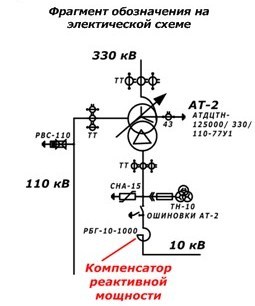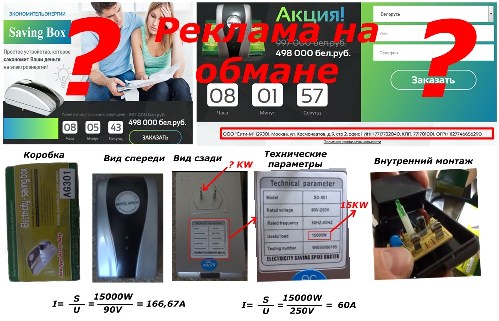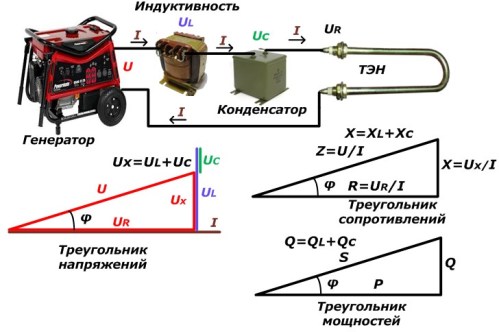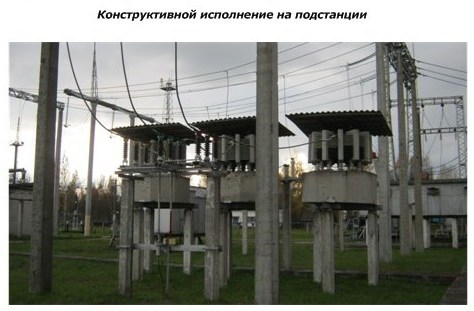Categories: Controversial issues, Energy saving
Number of views: 71975
Comments on the article: 26
Options for reactive energy compensation in the home using the Saving Box
Household appliance sales tricks to save energy
 Intrusive advertising on the Internet and even on state television channels through a television store persistently offers the public a device for saving energy in the form of "new products" of the electronic industry. Pensioners receive a discount of 50% of the total cost.
Intrusive advertising on the Internet and even on state television channels through a television store persistently offers the public a device for saving energy in the form of "new products" of the electronic industry. Pensioners receive a discount of 50% of the total cost.
“Saving Box” is the name of one of the offered devices. They have already been written about in the article. "Energy saving appliances: myth or reality?". It's time to continue the topic on the example of a specific model, explaining in more detail:
-
what is reactance;
-
how is active and reactive power created;
-
how reactive power compensation is carried out;
-
on the basis of which reactive power compensators and a device for saving energy work.
People who buy such a device will receive a package with a beautiful box in the mail. Inside, there is an elegant plastic case with two LEDs on the front side and a plug for installation in the socket - from the back.
A miracle device for saving energy (click on the picture to enlarge):
The attached photo shows the characteristics declared by the manufacturer: 15,000 watts with a voltage of 90 to 250 V.
At the lowest voltage indicated, such a device must pass a current of 166.67 A through itself, and at 250 V - 60 A. Let us compare the obtained calculations with the loads of AC welding machines.
The welding current for steel electrodes with a diameter of 5 mm is 150 ÷ 220 amperes, and for a thickness of 1.6 mm it is enough - 35 ÷ 60 A. These recommendations are in any manual of an electric welder.
Remember the weight and dimensions of the welding machine, which cooks with 5 mm electrodes. Compare them with a plastic box, the size of a mobile phone charger. Think about why steel electrodes of 5 mm melt from a current of 150 A, but the plug contacts of this “device” remain intact, and all the wiring in the apartment?
To understand the reason for this discrepancy, I had to open the case, showing the "insides" of the electronics. There, in addition to the board for illuminating the LEDs and the fuse, there is another plastic box for props.
Attention! In this scheme, there is no device for saving energy or compensating for it.
Is it a hoax? Let's try to understand with the help of the basics of electrical engineering and existing industrial compensators for electricity, working at energy enterprises.
Principles of Power Supply
Consider a typical scheme for connecting consumers of electricity to an alternating voltage generator, as a small analogue of the apartment’s power supply network. For clarity, its characteristics of inductance, capacitance and active load are shown. transformer winding, capacitor and TEN. We assume that they operate in a steady state when a single value I passes through the entire current loop.
Wiring diagram (click on the picture to enlarge):
Here, the energy of a generator with a voltage U is distributed by its components into:
-
inductance coil UL;
-
capacitor plates UC;
-
resistance TEN UR.
If we represent the quantities under consideration in a vector form and perform their geometric addition in the polar coordinate system, we get an ordinary stress triangle in which the magnitude of the active component UR in the direction coincides with the current vector.
UX is formed by adding voltage drops across the inductance UL and the capacitor plates UС. Moreover, this action takes into account their direction.
As a result, it turned out that the voltage vector of the generator U is deviated from the direction of the current I by an angle φ.
Once again, pay attention to the fact that the current in circuit I does not change, it is the same in all areas. Therefore, we divide the components of the stress triangle by the value I. Based on Ohm's law, we obtain the resistance triangle.
The total resistance of the inductance XL and the capacitance XC is usually called the term "reactance" X. The impedance of our circuit Z, applied to the terminals of the generator, consists of the sum of the active resistance of the heating element R and the reactive value of X.
Let's perform another action - multiplying the stress triangle vectors by I. As a result of the transformations, the power triangle is formed. Active and reactive power he creates the full applied value. The total energy generated by the generator S is spent on the active P and reactive Q components.
The active part is consumed by consumers, and the reactive is released during magnetic and electrical transformations. Capacitive and inductive capacities are not used by consumers, but they load current conductors with generators.
Attention! In all 3 rectangular triangles, the proportions between the sides are preserved, and the angle φ does not change.
Now we will understand how reactive energy is manifested and why household meters did not take it into account.
What is reactive power compensation in industry?
In the country's energy sector, and more precisely - the states of a whole continent, a huge number of generators are engaged in electricity production. Among them are found both simple home-made designs by enthusiastic craftsmen and powerful industrial plants of hydroelectric power stations and nuclear power plants.
All of their energy is summed up, transformed and distributed to the end consumer by the most complex technologies and transportation routes over vast distances. With this method of transmission, an electric current passes through a large number of inductances in the form of transformer / autotransformer windings, reactors, suppressors, and other devices that create an inductive load.
Air wires, and especially cables, create a capacitive component in the circuit. Its value is added by various capacitor units. The metal of the wires through which the current flows has an active resistance.
Thus, the most complex energy system can be simplified to the circuit we examined from a generator, inductance, active load and capacitance. Only it needs to be combined in three phases.
The task of energy is to provide consumers with high-quality electricity. In relation to the final object, this implies the supply to the input panel of electricity with a voltage of 220/380 V, a frequency of 50 Hz with no interference and reactive components. All deviations of these values are limited by the requirements of GOST.
In this case, the consumer is not interested in the reactive component Q, which creates additional losses, but in obtaining the active power P, which does useful work. To characterize the quality of electricity, use the dimensionless ratio of P to the applied energy S, for which the cosine of the angle φ is used. Active power P take into account all household electric meters.
Compensation devices for electric power normalize electricity for distribution between consumers, reduce reactive components to normal. At the same time, “equalization” of the sinusoidal phases is carried out, in which the frequency noise is removed, the effects of transients during circuit switching are smoothed out, the frequency is normalized.
Industrial reactive power compensators are installed after the inputs of transformer substations in front of switchgears: the full power of the electrical installation is passed through them.As an example, see a fragment of a single-line electrical circuit of a substation in a 10 kV network, where the compensator receives currents from the AT and only after processing it does the electricity flow further, and the load on the energy sources and connecting wires decreases.
Industrial compensators for electricity in a 10 kV network:

Let us return for a moment to the Saving Box and ask the question: how can it compensate for the power when it is located in the final outlet, and not at the entrance to the apartment in front of the meter?
Look at the photo how impressive industrial compensators look. They can be created and work on a different element base. Their functions:
-
smooth regulation of the reactive component with high-speed unloading of equipment from power flows and reducing energy losses;
-
voltage stabilization;
-
increasing the dynamic and statistical stability of the scheme.
The fulfillment of these tasks ensures the reliability of power supply and reduces the cost of the design of current leads by normalizing temperature conditions.
What is reactive power compensation in an apartment?
Home electrical appliances also have inductive, capacitive and active resistance. For them, all the ratios of the above triangles in which reactive components are present are valid.
It should only be understood that they are created during the passage of current (taken into account by the meter, by the way) over the load already connected to the network. The generated inductive and capacitive voltages create the corresponding reactive power components in the same apartment, additionally load the wiring.
Their value does not take into account the old induction meter. But some static accounting models are able to fix it. This allows you to more accurately analyze the situation with current loads and thermal effects on insulation during operation of a large number of electric motors. The capacitive voltage created by household appliances is very small, like its reactive energy and its meters often do not show.
Compensation of the reactive component in this case consists in connecting capacitor units that “quench” the inductive power. They should be connected only at the right time for a certain period of time and have their own switching contacts.
Such reactive power compensators are significant and are more suitable for production purposes, often working with a set of automation. They do not reduce the consumption of active power, can not reduce the payment of electricity.
The advertised Saving Box miracle device and other similar devices have nothing to do with similar designs. As a device for saving energy, it cannot work.
Conclusion
The capabilities and technical specifications of the Saving Box declared by the manufacturer are not true, they are used for advertising based on deception.
It has long been time for the consumer protection society and law enforcement agencies to take measures to stop the sale of low-quality products in the country, at least through state channels of information.
Active and reactive power consumption in an apartment can be reduced by following the simple recommendations outlined in the article: “How to save electricity in an apartment and a private house”.
See also at e.imadeself.com
:



